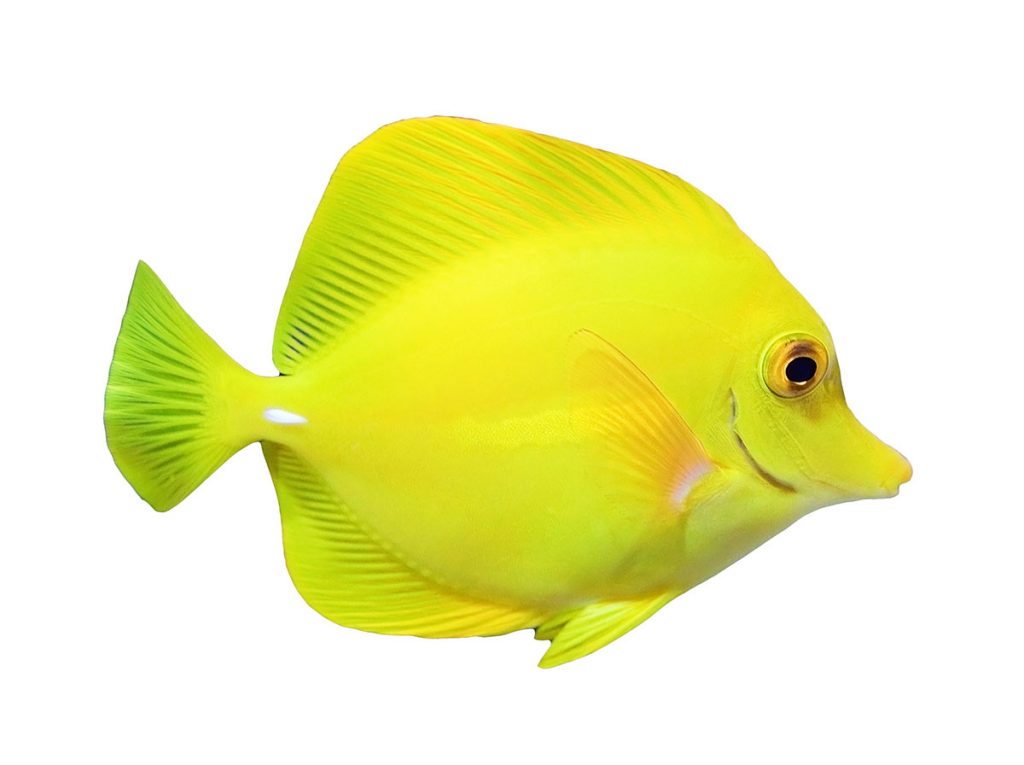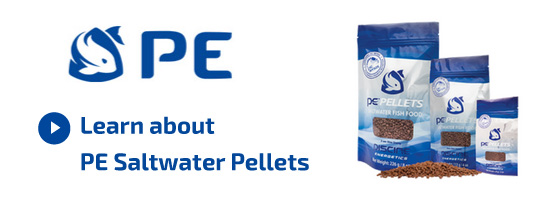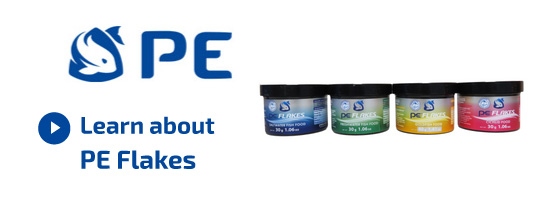Surgeonfish & Tangs Species
Surgeonfish & Tangs
Surgeonfishes and tangs are members of the Acanthuridae family, encompassing approximately 6 genera and 86 species. Surgeonfishes are a commonly kept aquarium species due to their algae eating habits, bold personality and attractive appearance.
The Yellow Tang (Zebrasoma flasvescens) is one of the most commonly sold surgeonfish species in the marine aquarium hobby. They are brightly colored, attractive and will help eat algae in an aquarium. Other commonly sold species include the Chevron Tang (Ctenochaetus hawaiiensis), Achilles Tang (Acanthurus achilles), Blue Hippo Tang (Paracanthurus hepatus) and the Scopas Tang (Zebrasoma scopas).
Biology
Surgeonfishes are typically found in shallow waters of the tropical and subtropical oceans. Their diet consists largely of algae, so they are restricted to the depth where algae can be found growing. They can range in size from 6” (15 cm) to 24” (60 cm), with a few species even reaching nearly three feet.
Surgeonfish are generally schooling fish that can be found in large shoals, though some species have been known to form pairs. Surgeonfish received their name from the surgeon like scalpel located on their caudle peduncle. This scalpel can be used for defense, or in disputes with other surgeonfish.
Captive Care
Surgeonfish can make great aquarium inhabitants, provided their husbandry needs such as diet, water quality and tank space are met.
Surgeonfish prefer a temperature range of 72F (22C) to 80F (26C). Surgeonfishes are generally considered very reef safe. In fact, their proclivity for consuming algae in the reef tank has made them very desirable to aquarists for this purpose. It is important to remember however, that the algae growth in an aquarium is not substantial enough to sustain an animal in good health. They still require ample feeding with a balanced diet.
It is important to consider carefully what species of surgeonfish may be best for your aquarium. While smaller species such as the Kole Tang (Ctenochaetus strigosus) are suited to tanks as small as 75 gallons, larger species such as the Dussumieri Tang (Acanthurus dussumieri) may be better suited to a larger aquarium.
Suggested Piscine Energetics Products
We suggest a diet based on Piscine Energetics Mysis, Piscine Energetics Calanus, Piscine Energetics Pellets (1mm and 2mm) and Piscine Energetics Saltwater Flakes.
What people are saying about PE:
After feeding my seahorses your mysis for about 3 months; they are fat and happy!!! they give me baby seahorses (at least 300 ) each 14 days... So I'm very satisfied of your mysis.The frozen mysis is about 70 per cent of their diet.
Yvan Charbonneau Quebec
I am keeping these Indian mudskippers -- very cute -- about 3-4 inches long. I've been feeding them frozen bloodworm, and decided to try them on mysis. I feed them in a "shallows" in the 150 I have set up for them. The minute the mysis hit the water they were on it, frozen and all. They gorged until their little bellies were almost bursting. I have yet to see an aquatic creature that does not go absolutely nuts over PE Mysis.
David Lass Massachusetts
I picked up my Mysis today and they arrived wonderfully. All the fish I fed them to, absolutely devoured them. They are my Frontosas new favorite food. All my Discus ate them up eagerly...heads and all!! I want to thank you again for your excellent service and product.
Pierre Brenton Nova Scotia
I have a large saltwater aquarium (220 gallons) with very expensive fishes and invertebrates. I tried to feed them with your PE Mysis and they really went crazy about it. Since that time, some of my fishes refuse any other product I offer them!






